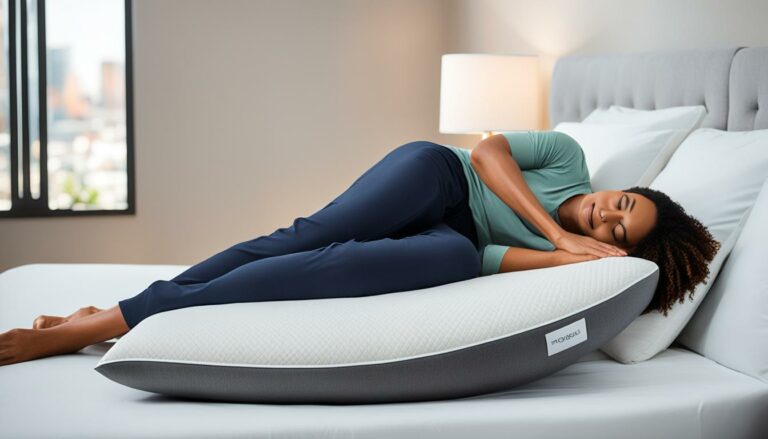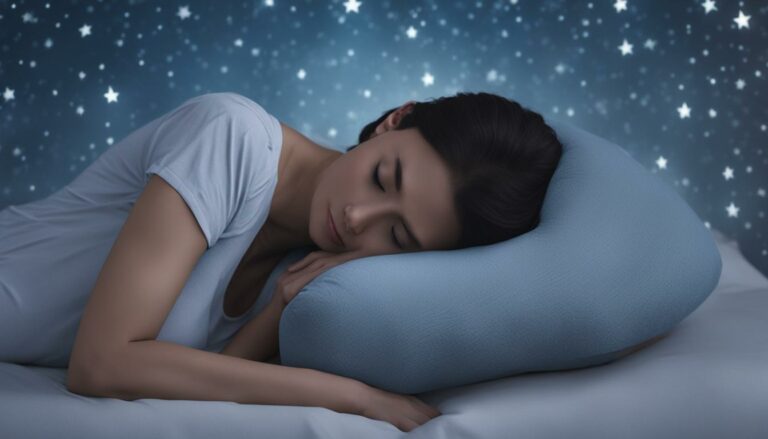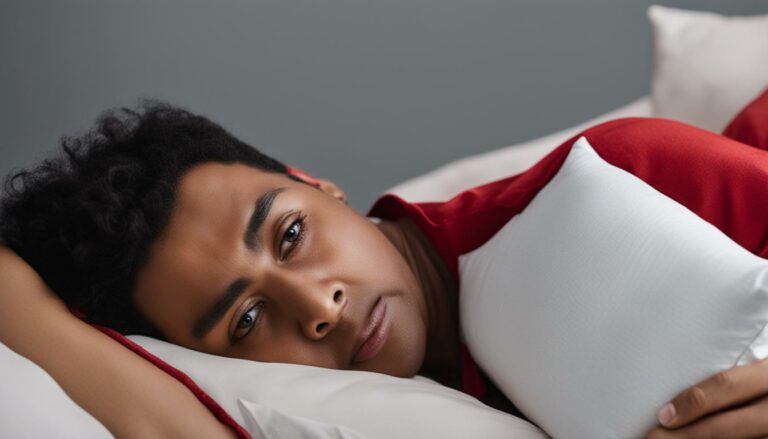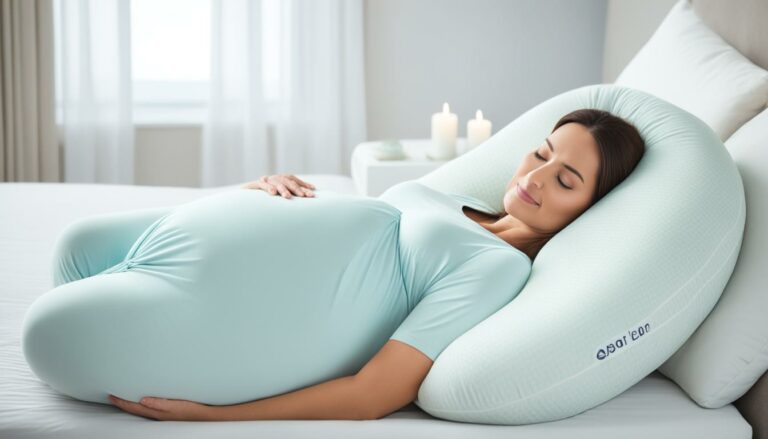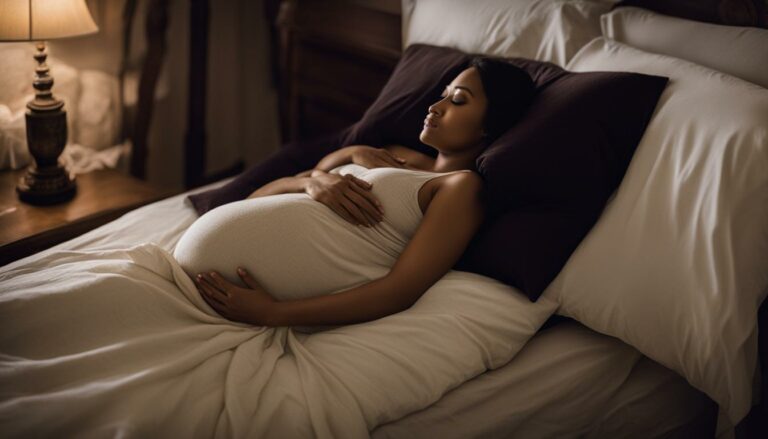Can Lice Lay Eggs on Pillows? Uncover the Facts.
Eric Christie stands as a luminary in the bedding industry, with a career spanning nearly four decades since the early 1980s. His journey through the world of bedding has seen him wear many hats – a manufacturer, designer, and retailer, showcasing his versatility and expertise in Read more...
pillowsandbedsheets.com and its partners may earn a commission if you purchase a product through one of our links
Head lice, specifically the species Pediculus humanus capitis, can lay eggs, also known as nits, on pillows and bedding. It is important to understand the life cycle and behavior of head lice to effectively manage and prevent infestations. Head lice primarily spread through direct head-to-head contact or sharing of infected items, making it possible for lice and their eggs to end up on pillows. While lice can live on pillows and bedding temporarily, they require a human host to survive long-term. However, it is still necessary to take measures to remove and prevent lice from infesting pillows and sheets.
Key Takeaways:
- Head lice can lay eggs on pillows and bedding, but they require a human host to survive long-term.
- Lice primarily spread through direct head-to-head contact or sharing of infected items.
- Proper hygiene and cleanliness do not significantly affect the likelihood of having or spreading lice.
- To manage lice infestation on pillows and bedding, washing them in hot water and using pillow protectors can be effective.
- Prevent lice transmission by practicing good hygiene, avoiding sharing head coverings, and trying on head coverings in stores.
Understanding Head Lice and Nits
Head lice are parasitic insects that primarily live on the human scalp. There are two categories of head lice: chewing lice and sucking lice. The species that affects humans is called Pediculus humanus capitis.
Nits are the eggs laid by adult lice. They are attached to the hair shaft near the scalp and can be easily mistaken for dandruff. The nits are oval-shaped and usually have a yellow or white color.
The life cycle of head lice consists of three forms: eggs (or nits), nymphs, and adults. The eggs take about 8-9 days to hatch into nymphs. Nymphs then require blood meals to survive and mature within 9-12 days, after which they become adult lice. Adult lice can live up to 30 days on a person’s head.
It is important to understand the life cycle of head lice to effectively combat infestations. By targeting both the adult lice and nits, the infestation can be completely eradicated.
| Stage | Duration |
|---|---|
| Eggs (Nits) | 8-9 days |
| Nymphs | 9-12 days |
| Adults | Up to 30 days |
How Head Lice and Nits Spread
Head lice are pesky little insects that primarily spread through direct head-to-head contact, especially among children. Due to their close proximity and frequent physical interactions, children are more susceptible to lice infestations. Unlike adults who tend to maintain personal space with physical boundaries, children are more likely to engage in activities like hugging, playing, or sleeping closely, making it easier for head lice to crawl from one head to another.
Additionally, lice can also spread through the sharing of infected items. This includes items such as hats, clothing, brushes, bedding, and towels. However, it’s important to note that this method of transmission is less common compared to head-to-head contact. Lice eggs or nits can cling to these items, allowing the lice to transfer to a new host when they come in contact with the shared items.
It’s worth mentioning that personal hygiene and cleanliness have little impact on a person’s likelihood of having or spreading head lice. Lice can survive and multiply in both clean and untidy environments. So, even if you take all the necessary hygiene precautions, you or your child can still get head lice through direct contact or sharing infected items.
“Head lice are highly contagious and can easily spread through close physical contact or sharing personal items. It’s important to be aware of these modes of transmission to effectively prevent lice infestations.”
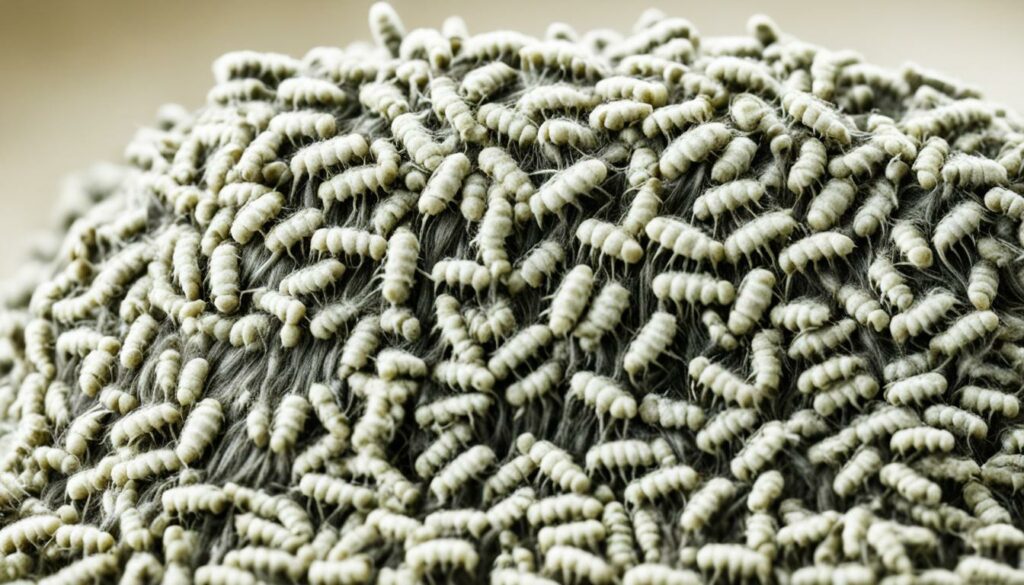
| Mode of Transmission | Description |
|---|---|
| Head-to-Head Contact | Direct contact between the heads, such as during hugging, sleeping, or playing, provides an opportunity for lice to crawl from one head to another. |
| Sharing Infected Items | Items like hats, brushes, bedding, and towels can carry lice or nits, allowing lice to transfer to a new host when in contact with these items. |
As the table illustrates, head-to-head contact is the primary mode of transmission, while sharing infected items poses a lower risk but still contributes to the spread of head lice.
Can Head Lice and Nits Live on Pillows or Sheets?
Head lice and nits can live on pillows and sheets, although they require a human host to survive long-term. Lice glue their eggs to the hair shaft near the scalp, but if an egg falls off onto a pillow or sheet, it can continue to survive until a nymph hatches from it. While an adult louse cannot survive without a human host for more than 1-2 days, it can still lay eggs during that time. Considering the life cycle of lice and nits, it is possible for live lice to be present on pillows or sheets for up to 13 days.
If you’re concerned about head lice infestation on your pillows or bedding, it’s important to take proactive measures to prevent the spread and eliminate any potential lice or nits. Regularly washing bedding in hot water can help kill any live lice or nits present. Additionally, running pillows and bedding through a tumble dryer on high heat can further aid in eliminating lice. Bagging items that cannot be washed, such as stuffed animals, for two weeks can ensure any lice or eggs have died. Using pillow protectors can also help prevent lice and eggs from entering pillows, making it easier to manage and treat infestations.
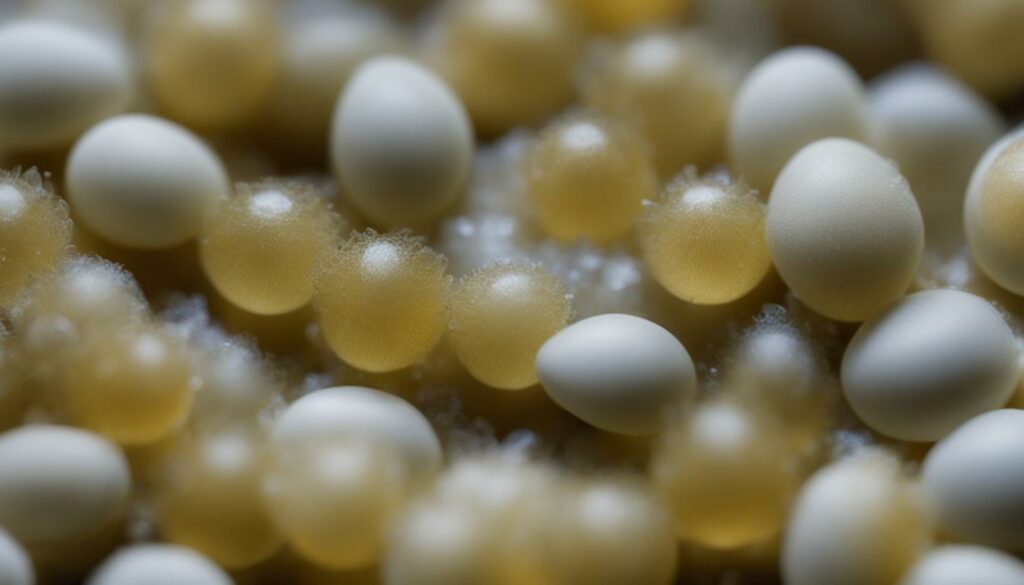
It’s important to note that while head lice can temporarily survive on pillows or sheets, they cannot infest or reproduce without a human host. Therefore, the risk of lice infestation from pillows or bedding alone is relatively low. However, taking precautions and following proper hygiene practices can help manage and prevent head lice infestations in your home.
How to Manage Lice Infestation on Pillows and Bedding
To effectively manage a lice infestation on pillows and bedding, there are several steps you can take. By following these measures, you can ensure a clean and lice-free sleep environment for you and your family.
Lice Treatment for Pillows –
The first step in managing a lice infestation on pillows is to wash all bedding in hot water. The high temperature will help kill any live lice or nits that may be present. It is important to thoroughly wash the pillows, pillowcases, sheets, and blankets. Make sure to follow the manufacturer’s instructions for washing and drying to ensure the best results.
Washing Bedding after Lice –
In addition to washing the bedding, running the pillows and bedding through a tumble dryer on high heat can also help eliminate any remaining lice. The heat from the dryer will further aid in killing any lice or nits that may have survived the washing process.
Pillow Protectors –
To prevent lice and eggs from entering the pillows and to make it easier to manage the infestation, it is advisable to use pillow protectors. These protective covers act as a barrier, preventing lice from infesting the pillows. Pillow protectors are available in various sizes and materials and are easy to wash and maintain.
Preventing Lice Spread –
When managing a lice infestation, it is crucial to practice good hygiene and avoid sharing infected items. Encourage family members to use their own pillows and avoid sharing bedding with anyone who may be infected with lice. It is also important to regularly wash and dry any clothing, hats, or other items that may have come into contact with lice. Taking these preventive measures can help stop the spread of lice and minimize the chances of reinfestation.
| Step | Description |
|---|---|
| 1 | Wash all bedding in hot water to kill live lice and nits. |
| 2 | Run pillows and bedding through a tumble dryer on high heat to eliminate remaining lice. |
| 3 | Consider using pillow protectors to prevent lice infestation and make it easier to manage. |
| 4 | Practice good hygiene and avoid sharing infected items to prevent the spread of lice. |
Tips for Lice Prevention and Transmission Reduction
While it is not possible to completely prevent a lice infestation, there are several strategies that can reduce the likelihood of transmission and help protect yourself and your family. By implementing these lice prevention strategies, you can minimize the risk of encountering these pesky insects.
1. Hair Maintenance
Proper hair maintenance is an essential part of lice prevention. Regularly brushing your hair, especially with a fine-toothed lice comb, can help detect and remove any lice or nits. For individuals with longer hair, styling it in a ponytail or an updo can minimize the opportunity for hair-to-hair contact, reducing the chances of lice infestation.
2. Avoid Sharing Head Coverings
Sharing head coverings, such as hats, wigs, or helmets, can significantly increase the risk of lice transmission. It is best to avoid sharing these items altogether to prevent the spread of lice. Remember, even a brief exchange of head coverings can potentially transfer lice from one person to another.
3. Be Cautious When Trying On Head Coverings in Stores
While it may be tempting to try on various hats in a store, keep in mind that lice can easily transfer from one person to another through head coverings. If you must try on head coverings, like hats or wigs, take precautions. Use a disposable hairnet or try on hats with a protective barrier, such as a clean, thin towel or a plastic bag, to prevent direct contact between your head and the item.
4. Isolate Newly Purchased Head Coverings
If you buy new head coverings, whether it’s a hat, wig, or scarf, it’s a good idea to isolate them for two weeks before wearing them. This allows sufficient time for any potential lice or nits to die off. Simply store the new items in a sealed plastic bag or container during the isolation period.
| Prevention Strategies | Effectiveness |
|---|---|
| Regular hair maintenance | High |
| Avoiding sharing head coverings | High |
| Being cautious when trying on head coverings in stores | Moderate |
| Isolating newly purchased head coverings | Moderate |
Implementing these lice prevention strategies can go a long way in reducing the risk of lice infestation. By maintaining proper hair hygiene, avoiding the sharing of head coverings, and taking precautions when trying on new items, you can help protect yourself and your loved ones from these unwelcome guests.
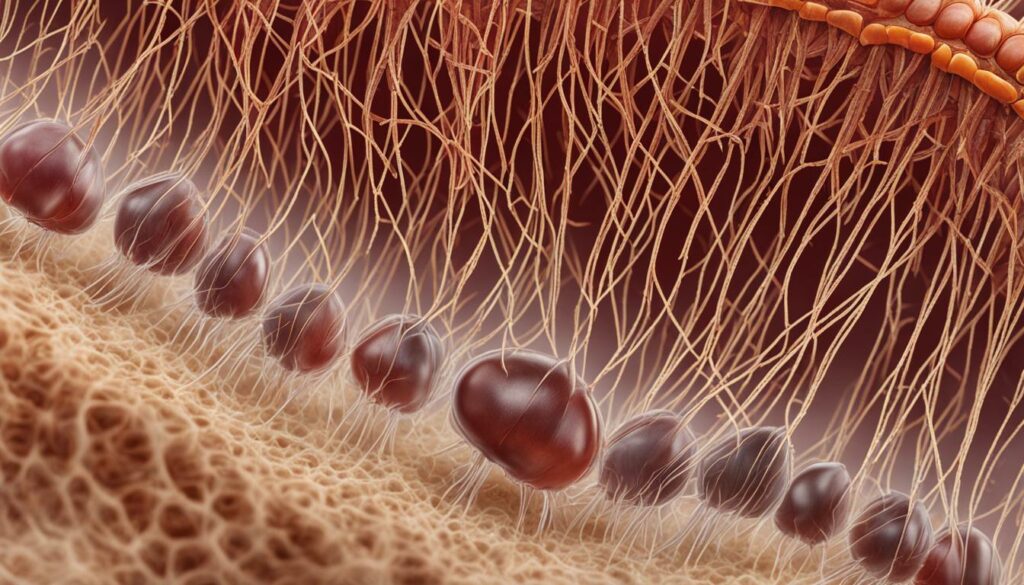
Effective Treatments for Head Lice
When it comes to lice infestations, there are several treatment options available. From traditional methods to over-the-counter medications, finding the right approach for you or your child’s specific needs is crucial.
Wet Combing
One effective lice treatment method is wet combing. This involves using a fine-toothed comb to meticulously remove lice and nits from the hair. Wetting the hair with a conditioner or a specially formulated lice-detangling solution can make the process easier.
Over-the-Counter Medications
If wet combing fails to eliminate the lice, over-the-counter (OTC) lice lotions and sprays can be an alternative option. These products contain active ingredients that target and kill lice and nits. It is important to carefully follow the instructions on the product packaging and check for potential resistance issues.
Remember to thoroughly check the ingredient list and expiration date before using any OTC lice medications.
In some instances, lice have developed resistance to certain OTC medications. If you find that the infestation persists despite using OTC treatments, it may be necessary to seek professional advice.
Seeking Professional Help
In cases of severe or resistant lice infestations, it is recommended to seek professional help. A pharmacist or healthcare professional with experience in treating lice can provide guidance on alternative treatments or prescribe stronger medication.
Seeking professional help is especially crucial if the infestation is persistent or if multiple family members are affected. A knowledgeable professional can assess the situation and provide personalized treatment options to eradicate the infestation effectively.
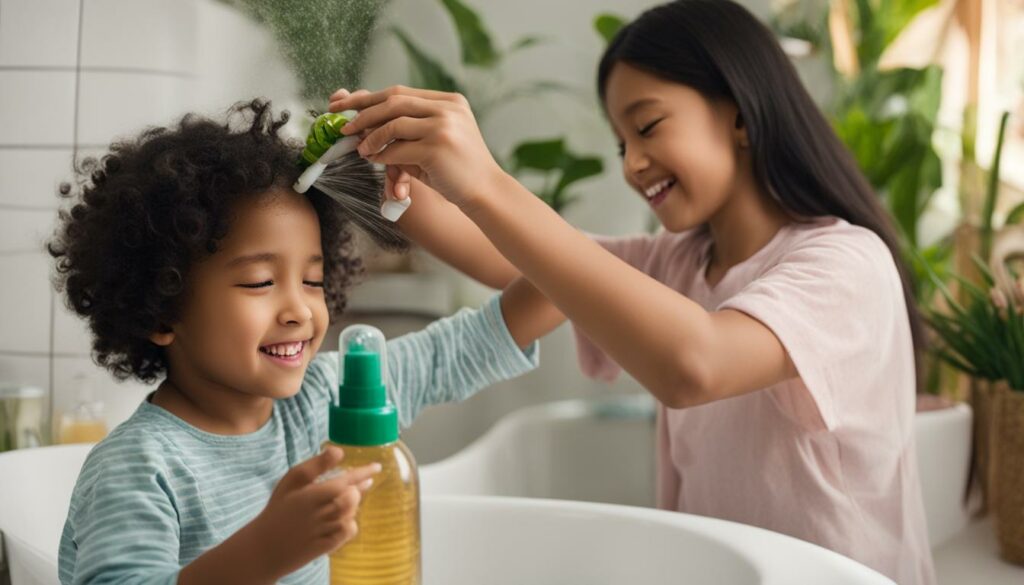
Facts about Head Lice and Their Life Cycle
Understanding the life cycle of head lice is crucial in managing and treating infestations. Here are some important facts about head lice and their life cycle:
Life Cycle Overview
Head lice go through three main stages in their life cycle: eggs (nits), nymphs, and adults. The entire life cycle takes about 2-4 weeks.
- Eggs (Nits): Lice eggs, known as nits, are laid by adult female lice near the base of the hair shaft, usually within 6mm from the scalp. Nits are oval-shaped, about the size of a pinhead, and are typically yellowish-white or translucent in color. They are firmly attached to the hair shaft and can be difficult to remove.
- Nymphs: After about a week, the eggs hatch and nymphs emerge. Nymphs are small and immature lice that resemble adult lice, but they are smaller in size. They require blood meals to survive and molt three times before reaching adulthood.
- Adults: Within another week, nymphs mature into adult lice. Adult lice are about the size of a sesame seed and have six legs. They are usually tan or grayish-white in color. Adult lice can live up to 30 days on a person’s head, but they need regular blood meals to survive.
Transmission Risks
The main mode of head lice transmission is through direct head-to-head contact. Lice cannot jump, fly, or swim, so physical contact is necessary for them to transfer from one person to another.
“Head lice primarily spread through direct head-to-head contact.”
It’s important to educate children about the risks of sharing personal items such as combs, brushes, hats, and scarves, as these can also contribute to lice transmission.
Viability of Nits
While nits can survive off the scalp, their viability depends on various factors. Eggs that are laid close to the scalp are more likely to be viable and able to hatch. Nits need the warmth and humidity of the scalp to develop properly. Once nits are away from the scalp, they may not hatch or survive for long.
Head Lice Appearance
The image above shows the appearance of adult head lice. As mentioned earlier, adult lice are about the size of a sesame seed and have six legs. They can often be found crawling in the hair, especially around the scalp and behind the ears.
By understanding the life cycle of head lice, recognizing the appearance of lice and nits, and being aware of the transmission risks, you can effectively manage and prevent infestations.
Myth 1: Lice Infestation is a Result of Poor Hygiene or Cleanliness
Contrary to popular belief, lice infestation is not a reflection of personal hygiene or cleanliness. Head lice can affect anyone, regardless of how clean their hair or home may be. Lice are primarily transferred through direct head-to-head contact, not through the cleanliness of the environment. It is important to focus on appropriate treatment and prevention methods rather than blaming yourself or others for a lice infestation.
Myth 2: Lice Carry and Transmit Diseases
Another common misconception is that lice can transmit diseases. However, head lice themselves do not carry or transmit diseases from one person to another. Lice feed on human blood and their bites may cause itching and discomfort, but they are not vectors for diseases. It is crucial to separate the facts from the myths to avoid unnecessary anxiety or fear associated with lice infestations.
Myth 3: Pets Can Get Head Lice or Transmit Them to Humans
Head lice are specific to humans and cannot infest or be transmitted by pets. Your furry friends are not at risk of getting head lice, and you cannot get lice from them. Lice require a human host to survive and cannot thrive on animals. Focus on appropriate prevention methods within your household to effectively manage and prevent lice infestations.
Myth 4: Fumigating the House and Using Pesticide Sprays is Necessary
Contrary to popular belief, there is no need to fumigate the entire house or use pesticide sprays to eliminate lice. Lice cannot live off a human host for more than 24-48 hours. They rely on close contact with the scalp to survive and reproduce. Cleaning and vacuuming the areas where the infested person spends a significant amount of time, such as their bedding and personal items, is sufficient to prevent the spread of lice. Focus on targeted treatment and prevention methods rather than resorting to unnecessary and potentially harmful pesticide applications.
By understanding and debunking these common myths and misconceptions, you can effectively manage and prevent head lice infestations. Remember to rely on accurate information and appropriate treatment methods to address and resolve any lice-related concerns you may have.
FAQ
Can lice lay eggs on pillows?
Yes, head lice can lay eggs, also known as nits, on pillows and bedding. Although they require a human host to survive long-term, lice and their eggs can temporarily reside on pillows.
How do head lice and nits spread?
Head lice primarily spread through direct head-to-head contact or the sharing of infected items such as hats, clothing, brushes, bedding, and towels.
Can head lice and nits live on pillows or sheets?
While lice require a human host to survive long-term, they can temporarily live on pillows and sheets. Lice eggs, or nits, can survive on these surfaces for up to 13 days.
How can I manage a lice infestation on pillows and bedding?
To manage a lice infestation on pillows and bedding, you can wash them in hot water, run them through a tumble dryer, bag items that cannot be washed, and use pillow protectors to prevent lice and eggs from entering.
What are some tips for lice prevention and reducing transmission?
To prevent lice, practice good hygiene, avoid sharing head coverings, and be cautious when trying on new head coverings in stores. Regular hair maintenance and putting longer hair up in a ponytail can also help reduce transmission.
What are some effective treatments for head lice?
Treatments for head lice include wet combing, over-the-counter (OTC) lotions and sprays, and seeking professional help. Wet combing involves removing lice and nits from the hair with a lice comb, while OTC medications can be used but may have resistance issues.
What are some facts about head lice and their life cycle?
Head lice eggs take about a week to hatch into nymphs, which then mature into adults within another week. Adult lice can live up to 30 days on a person’s head, and nits are usually laid within 6mm from the scalp.
What are some common myths and misconceptions about head lice?
Common misconceptions include the belief that lice infestation is caused by poor hygiene or cleanliness, that lice can infest pets, and that fumigating the house is necessary. It is important to separate fact from fiction when dealing with head lice.
Eric Christie stands as a luminary in the bedding industry, with a career spanning nearly four decades since the early 1980s. His journey through the world of bedding has seen him wear many hats – a manufacturer, designer, and retailer, showcasing his versatility and expertise in Read more...



